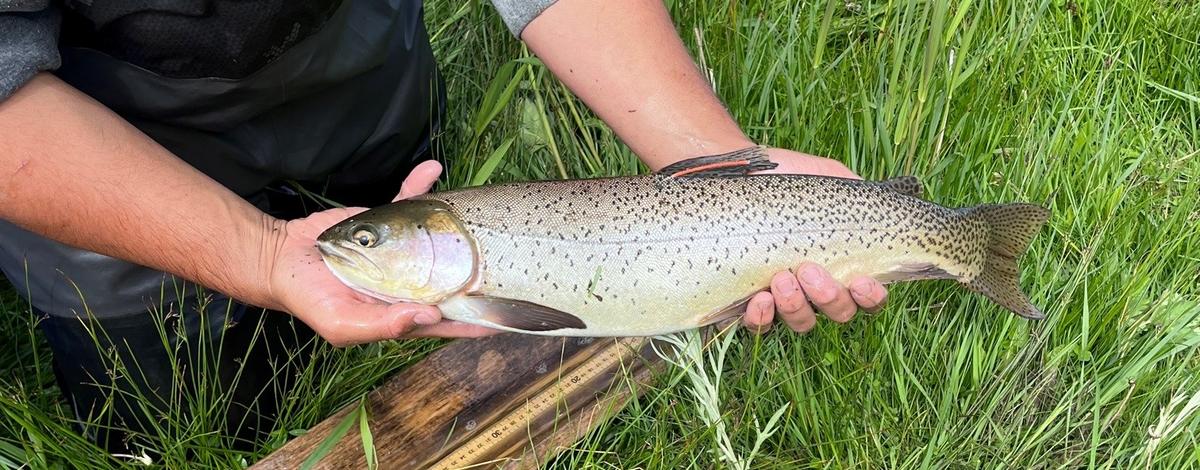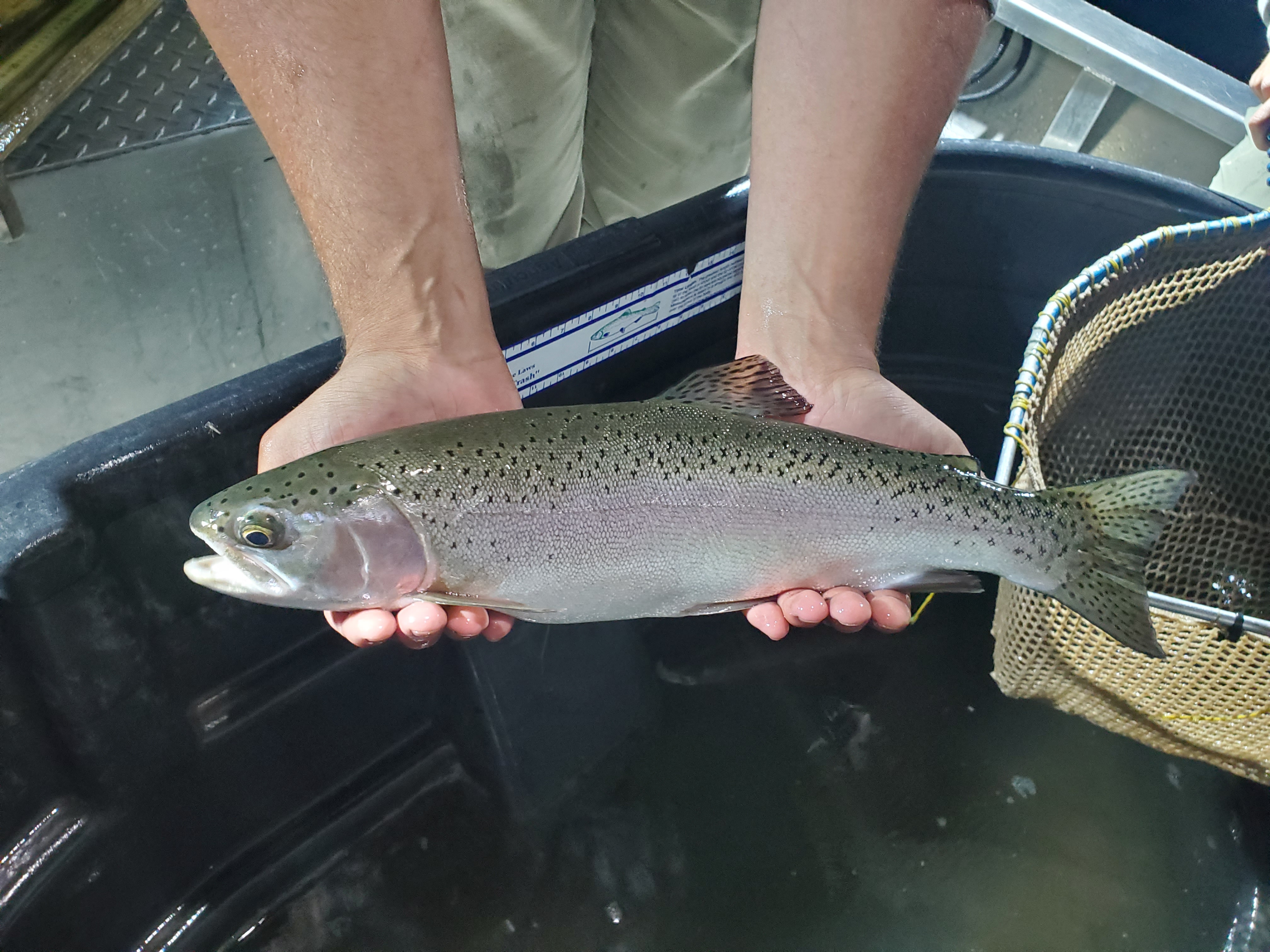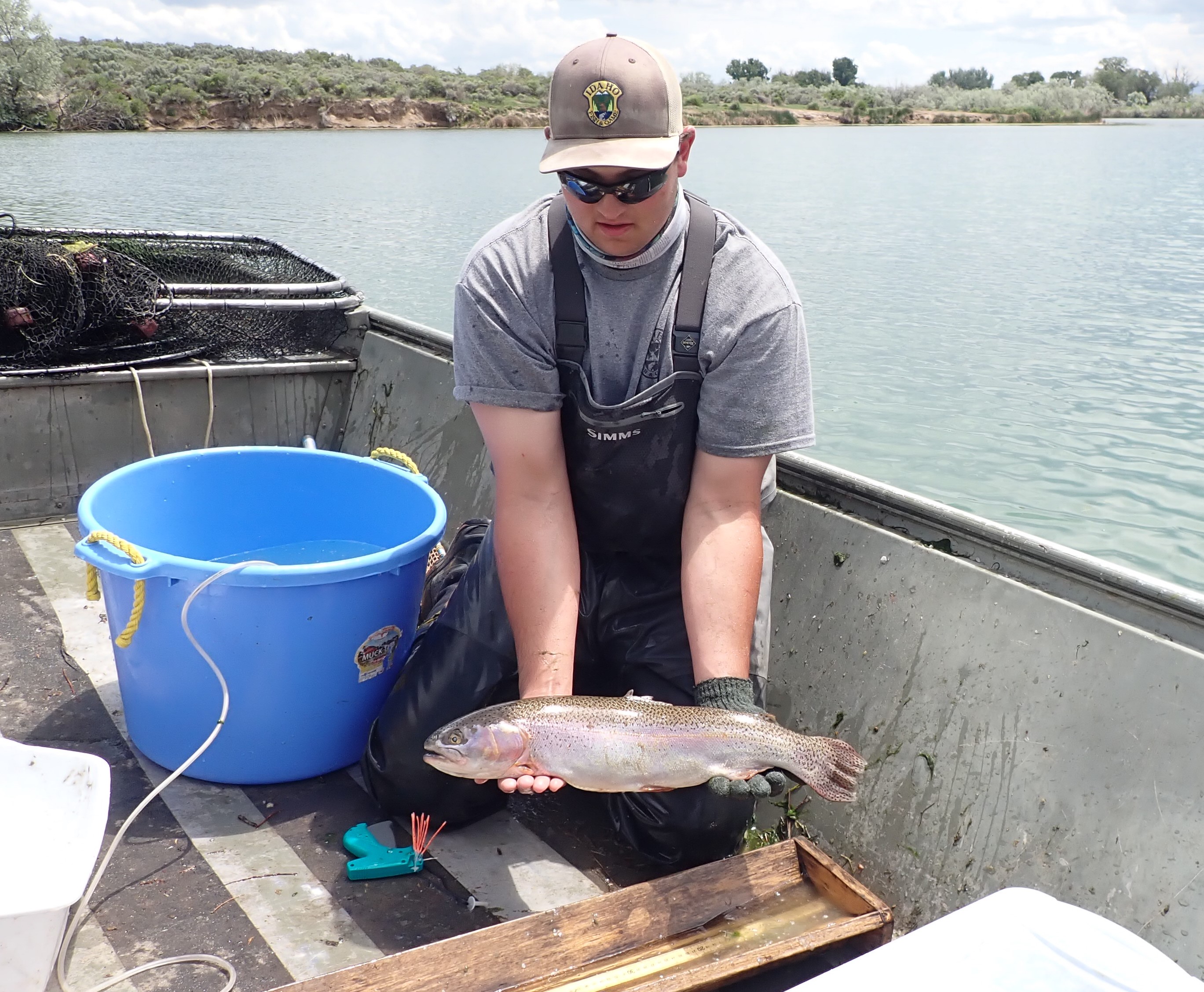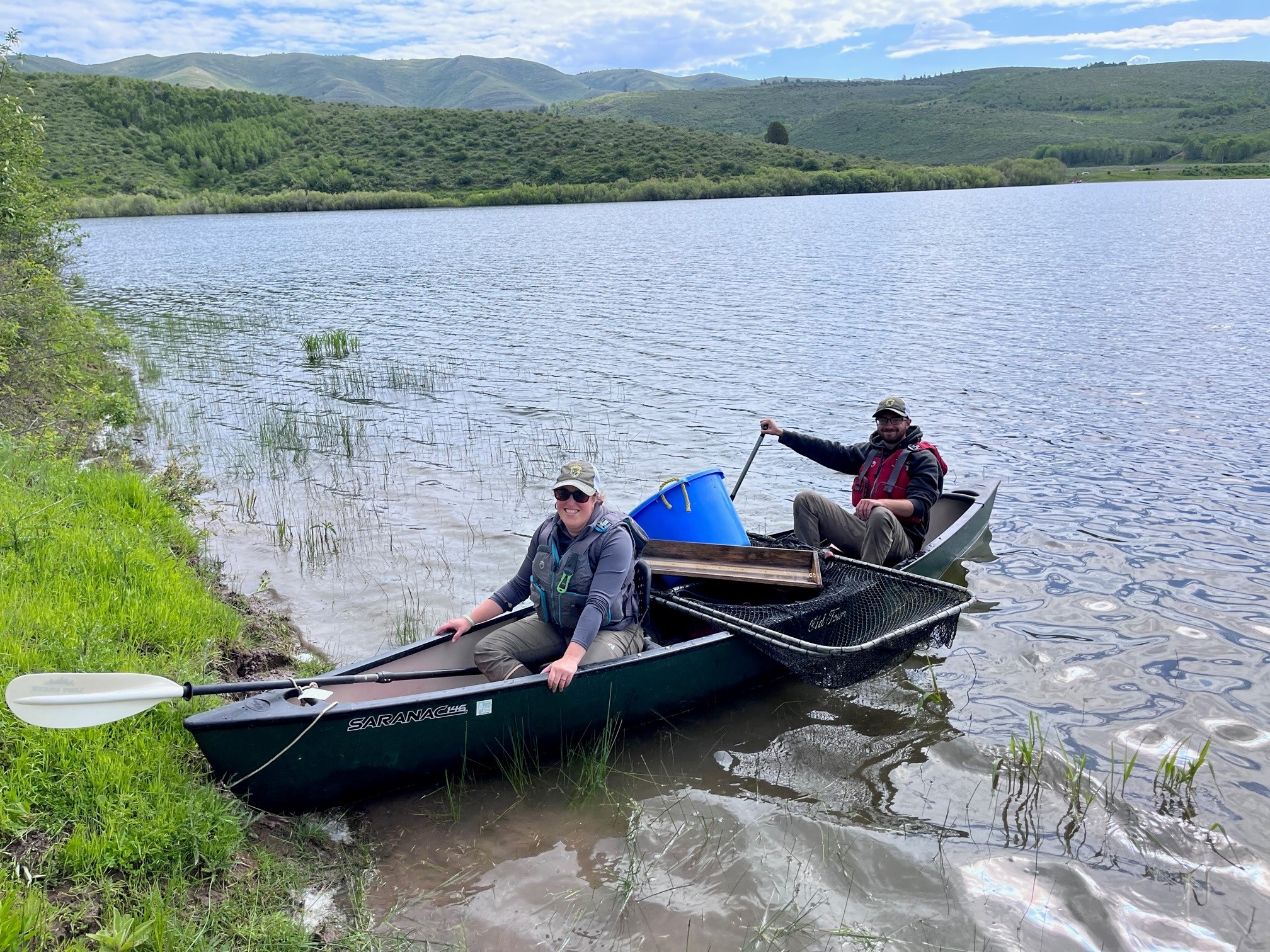What do Daniels Reservoir, Treasureton Reservoir, Springfield Lake, and Twentyfour Mile Reservoir have in common? Idaho Fish and Game manages them as trophy trout waters in the Southeast Region which means:
- Trout limit is 2, none under 20 inches
- One line only when ice fishing
- No bait allowed, barbless hooks required.
These waters are popular destinations for those seeking large trout, but in recent years anglers have expressed concerns about the quality of these fisheries to staff in the Southeast Region. In June of 2023, our fisheries management team sought to answer whether these waters were still performing well under the trophy regulations. Our surveys used our standard “lowland lake” gears of gillnets, trapnets, and boat electrofishing at Daniels, Treasureton and Springfield while only gillnets and trapnets were used at Twentyfour Mile due to the absence of an improved boat ramp.




